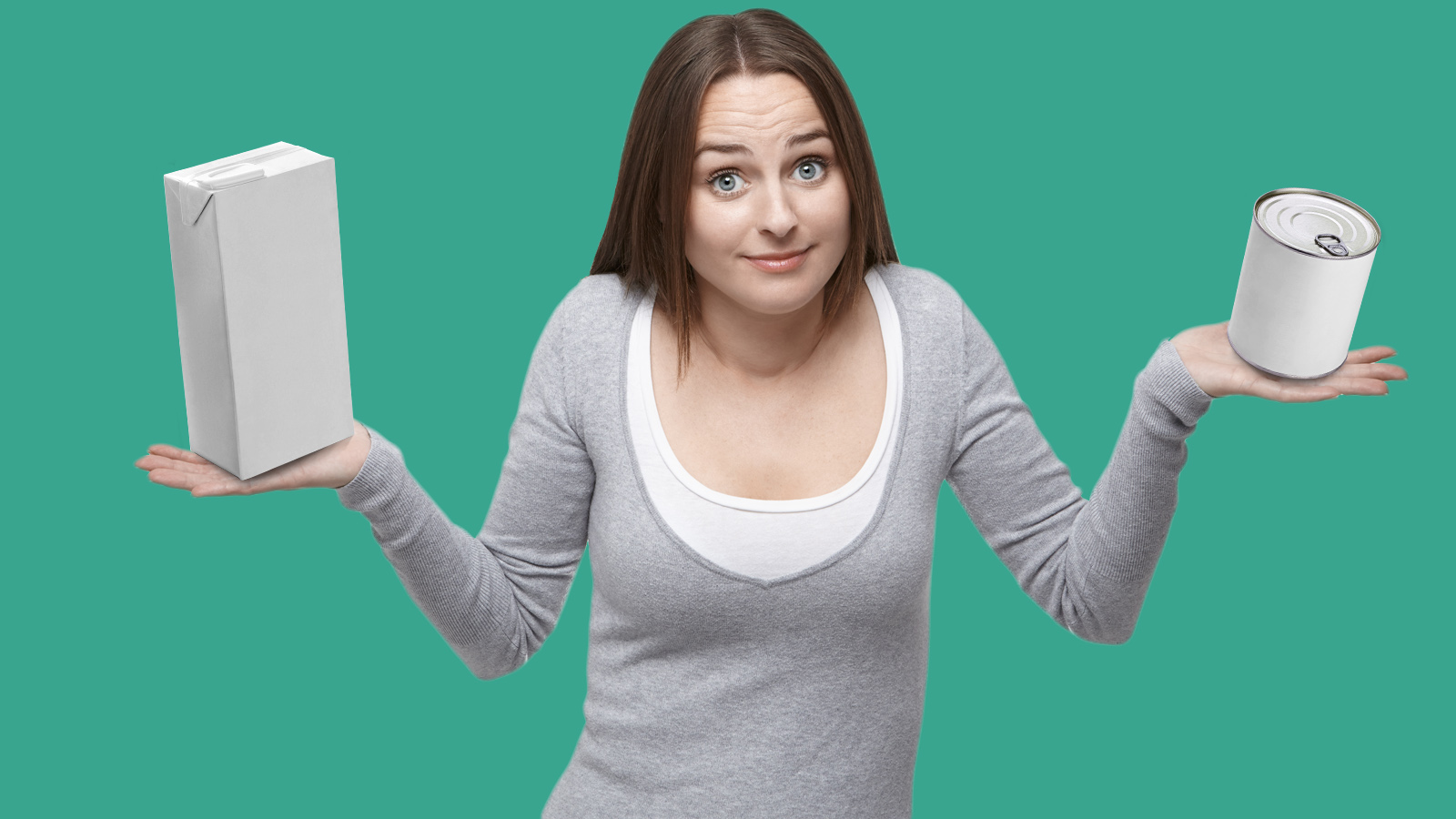Send your question to Umbra!
Q. I see that some foods previously available only in cans are now available in cartons — soup, tomato products, pumpkin puree, etc. How do the types of packaging compare on an environmental basis?
Puzzled by pumpkin puree,
Abigail D.
Washington, D.C.
A. Dearest Abigail,
Ah, the perennially puzzling packaging question, or PPPQ. Many discerning shoppers like you have written me attempting to untangle the knotty questions of glass bottles vs. cartons, big jugs vs. little cartons, glass bottles vs. cartons again, and many more. Now that cartons are muscling in on can territory, what are we to think?
These cartons – technically called aseptic packages – have been popular in Europe for decades and began cropping up Stateside in the ’80s. Now, you’re likely to find them encasing everything from wine to soymilk to chicken broth to the aforementioned pumpkin puree. A quick review of their green credentials: Being rectangular, cartons are more efficient to pack and ship and also lighter than cans. Tetra Pak, the leading carton manufacturer, also reports that its beverage cartons are only 4 percent packaging to 96 percent product by weight, compared to 13 percent packaging to 87 percent product for a steel can. Of course, the less packaging, the happier we should be.
And then there’s the fact that cartons are about 70 percent paper, a renewable resource that’s increasingly coming from Forest Stewardship Council (FSC)-certified sources. (Some argue FSC certification isn’t perfect, but that’s another column.) And finally, bottling plants may be cheaper to run, and some argue food tastes better from a carton than a can.
There are down sides to cartons, however. At first glance, aseptic packages look like simple cardboard. But they’re actually a six-layer sandwich of paper, aluminum, and low-density polyethylene, and therein lies the major rub: Separating the materials from each other for recycling isn’t easy. That’s not to say it can’t be done – the polyethylene and aluminum can be mushed together and injection-molded to make benches and roof tiles, and the paper often gets recycled into toilet paper – but not every recycling company will accept cartons. If yours doesn’t, that’s an easy mark in favor of the old-fashioned can. Lucky for you, Abigail, Washington, D.C., does recycle cartons.
“Tin” cans – actually steel with a thin tin coating – may be heavier and less efficient to ship, but they’re easily and frequently recycled. In fact, most new steel products are actually made from 20 to 100 percent recycled metal, which helps reduce energy use over producing virgin steel. There’s one more thing to keep in mind with cans: Most are lined with BPA (an issue even when you’re doing your own canning).
How does it all shake out? A Tetra Pak-commissioned, peer-reviewed study rules in favor of the aseptic carton, saying cans produce significantly more carbon emissions throughout their life cycle. While that may raise eyebrows a bit, other studies seem to back it up. Cartons tend to fare well when compared to other types of packages too, as in this Spanish study that declared them (along with plastic) tops over glass vessels.
So opting for cartons over cans can be a smart decision, but let’s not let these either-or queries obscure the real issue at hand: Reducing the amount of packaging we use should be our first priority. To that end, Abigail, I heartily endorse making your own fresh (organic, local!) soup, tomato sauce, and pumpkin puree when you can. Often easier said than done, I know, but a little menu-planning ahead of time goes a long way toward making it happen. When you are buying store-bought, go for bulk and skip packaging-heavy individual portions; or even better, search out products that come in refillable containers. Future PPPQs are always welcome, but keep in mind most will end with this perennial advice.
Broken recordly,
Umbra



